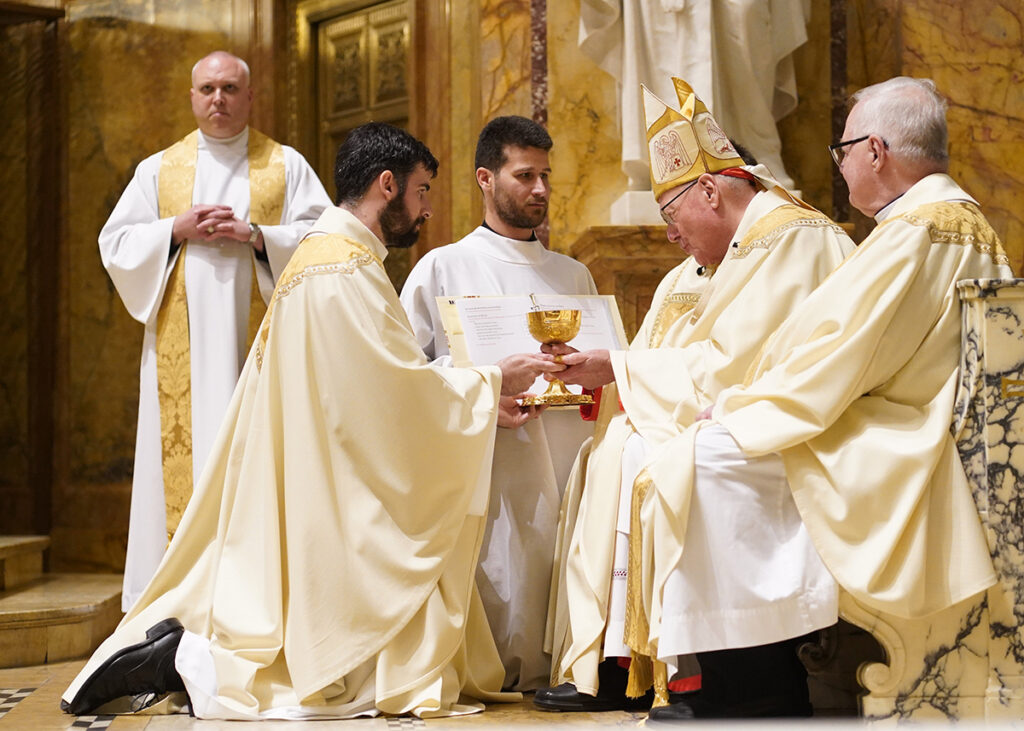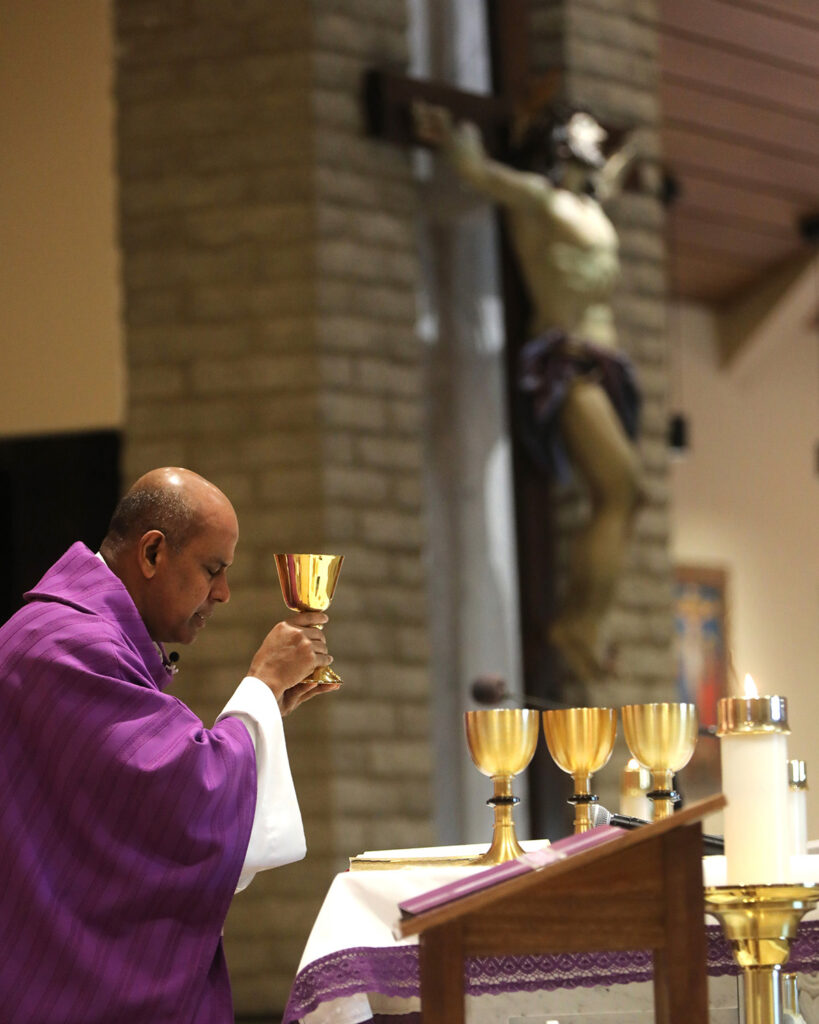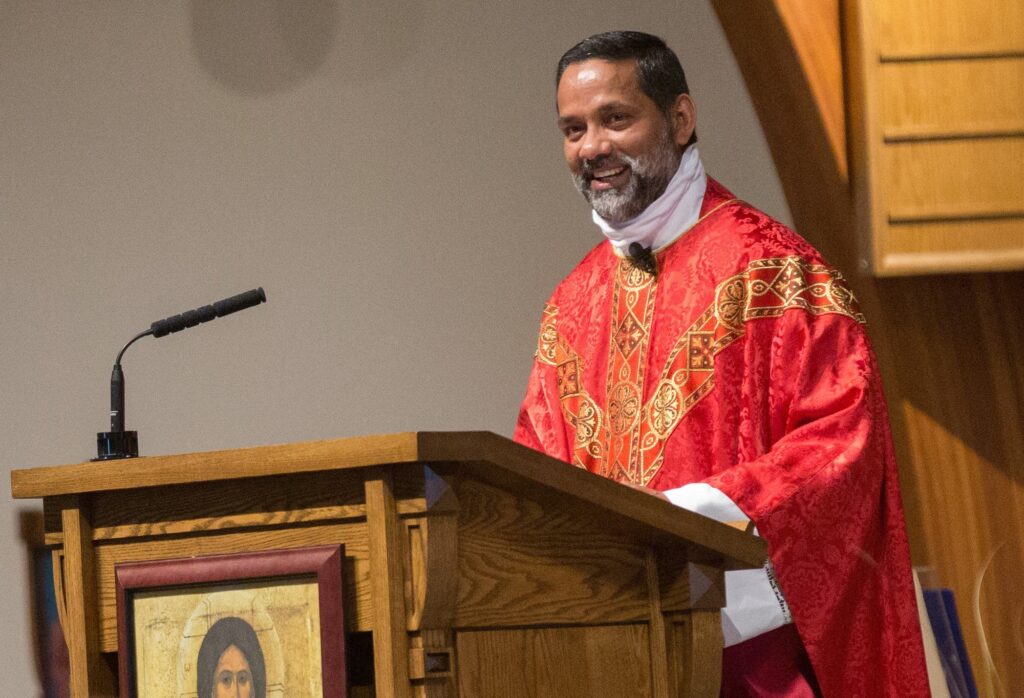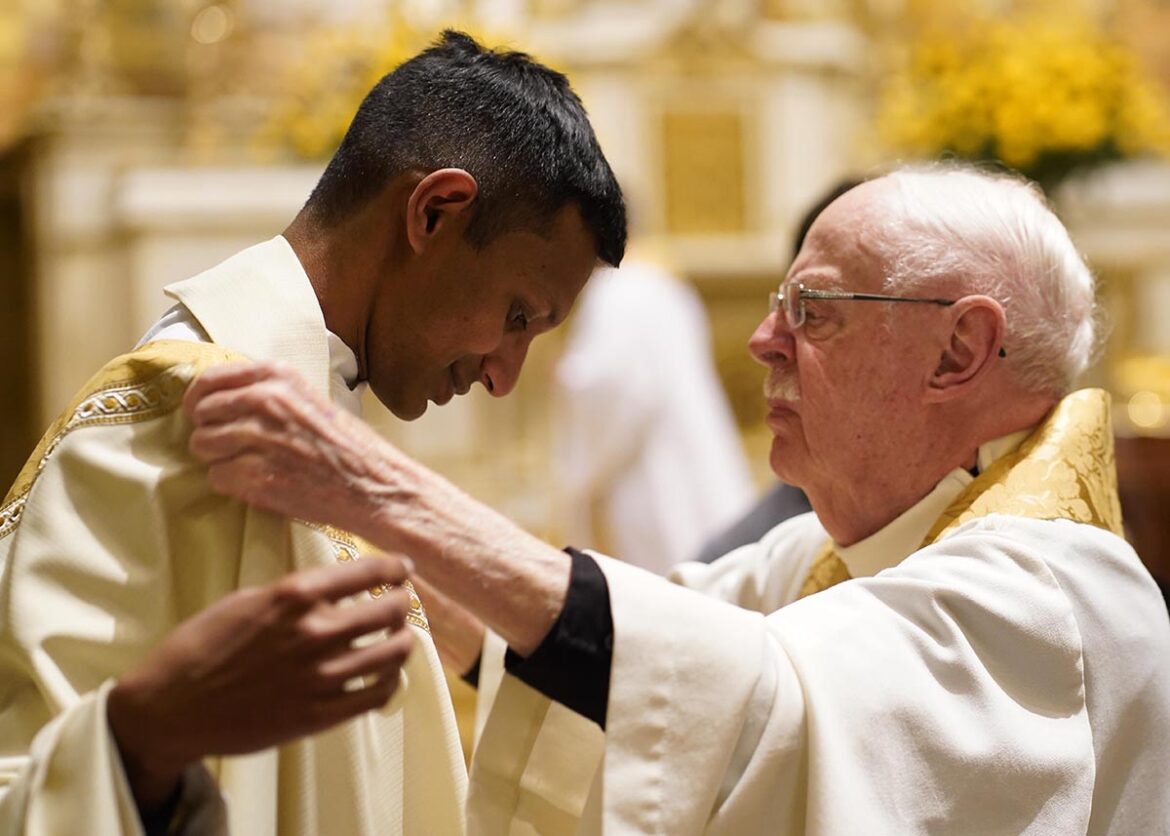(OSV News) — A new study on U.S. priests shows that many report satisfaction with their ministry, but trust in bishops and major superiors is still low, although improving.
In addition, many younger priests are at risk of burnout and loneliness as their responsibilities increase amid a decline in vocations — but youth, family ministry and evangelization are key pastoral priorities.
And while priests in general were somewhat lukewarm on the theoretical concept of synodality, they are in practice rather good at it.
Those are among the results published in “Morale, Leadership, and Pastoral Priorities: Highlights from the 2025 National Study of Catholic Priests” by Brandon Vaidyanathan, Stephen Cranney, Stephen P. White and Sara Perla.
The study was released Oct. 14 by The Catholic Project at The Catholic University of America, and serves as a follow-up to its landmark 2022 national study.
For the latest report, researchers contacted original survey respondents — consisting of both diocesan and religious order priests — with Gallup conducting the poll May 12-June 30. A total of 1,164 priests completed the survey for a response rate of 38%.
The new survey sought to “more deeply understand American priests’ experiences of ministry ‘on the ground,’ as well as assess any changes in their morale and confidence in Church leadership,” said the report authors, who also looked at the priests’ “pastoral priorities and needs.”
“Our hope is to better understand American priests — the challenges and opportunities they face — so that the whole church can benefit from a stronger presbyterate,” White told OSV News. “There are a lot of stereotypes about priests and this data helps clear some of those away.”
Flourishing, but burnout looms
On balance, said White, “American priests are flourishing and their confidence in bishops has slightly improved since 2022.”
As in 2022, respondents averaged 82 out of 100 on the Harvard Flourishing metric, which measures five key areas: “happiness and life satisfaction, physical and mental health, meaning and purpose, character and virtue, and close social relationships,” according to the website of Harvard’s Human Flourishing Program.
Yet respondents’ assessment of how well their respective dioceses or religious orders fared was considerably less positive, said the report.
Researchers analyzed priests’ morale by presenting three statements, drawn from their previous survey, designed to measure respondents’ negative talk about priestly ministry, as well as feelings of being emotionally or physically drained due to ministry work.
Most priests (61%) did not report any symptoms of burnout, the term coined in 1974 by psychologist Herbert Freudenberger to describe the loss of motivation or incentive among professionals, particularly caregivers.
Yet 39% demonstrated at least one symptom, said the report, with only 5% exhibiting all three.
The report found “noticeable differences” between diocesan and religious priests regarding burnout, with 7% of the former showing high levels of burnout, compared to only 2% of religious order priests.
In addition, said researchers, “44% of diocesan priests showed at least one symptom of burnout compared to only 31% of religious priests.”
Priests ordained since 2000 were more likely to report feeling overwhelmed, said the report, with “almost half” (45%) saying “they are expected to do too many things ‘that go beyond (their) calling as priests.'”
In contrast, that feeling was shared by only 13% of priests ordained before 1980, and 38% of those ordained from 1980-1999.
The report authors said the “generational difference” in the responses “points to growing concerns about sustainability in ministry, especially as parish demands increase” — although despite many priests serving in two (23%) or more (17%) parishes, “the number of parishes a priest serves is not statistically related to his level of burnout.”
Some of the difference may be due to “generational understandings regarding what a priest’s calling means,” researchers noted.

In addition, said the report, more recently ordained priests reported higher levels of loneliness compared to their older counterparts, with 40% of those ordained after 2000 ranking 6 or higher on the UCLA Loneliness Scale.
Overall, the data indicated that while “not universal,” burnout remains “a substantial pastoral challenge,” said the report.
The data also challenged “anecdotal evidence” that young priests have a high attrition rate, since 81% of responding priests indicated their morale was good, with just 3% saying they were thinking of leaving the priesthood.
The majority of priests were found to be in good mental health, with only 2% experiencing what the Kessler K6 psychological scale would rank as “severe mental illness or severe psychological distress,” said the report.
Stressors for priests may vary among parishes and dioceses, and can be compounded by larger issues such as diocesan restructuring and bankruptcy, said the report.
Mending trust with bishops
Vaidyanathan told OSV News that along with “modest improvements on indicators of burnout,” the new report data showed a slight gain in priests’ levels of trust in the U.S. bishops — something that had plunged in the 2022 survey from levels in the 1990s and early 2000s.
Now, 52% of diocesan priests say they have confidence in their bishops, up from 49% in 2022, and 27% of all priests expressed confidence in the U.S. Conference of Catholic Bishops as a body, composed to 22% in the previous survey.
Some of that gain may be due to the 30 bishops that have been appointed in the three years between the first and second survey, said researchers.
The latest results also showed that — in contrast to the 2022 survey — priests tend to believe they are theologically (61%) and politically (48%) aligned with their bishops, with a fairly even spread as to whether priests believe their bishops are more conservative or liberal.
“Overall, there is no consistent perception among priests that bishops lean systematically more conservative or liberal relative to their own views,” said the report.
The new data shows that “a far greater predictor of a priest’s confidence in his bishop
is whether the priest agrees with the statement, ‘I feel that my bishop cares about me,'” said the report.
Researchers found that 72% of diocesan priests who indicated their bishops care about them expressed confidence in their prelate, while confidence levels dropped to 10% among counterparts who did not say their bishop cares about them.
Yet, said the report, “Care alone is not enough to produce confidence.”
“Although more than 70% of priests believe their bishop cares for them, only about half actually had confidence in him,” said the report.
Political, theological outlooks and concerns
For their part, priests polled for the current survey continued to demonstrate, both politically and theologically, a “clear generational shift away from liberal self-identification, with moderates now making up a large share across most recent cohorts,” said the report.
Theologically, the report found “an even sharper decline in progressivism and a stronger consolidation on the conservative side.”
However, in response to a direct question as to whether they were “concerned about the policies of the current political administration in the U.S.,” the report found that “even among those priests who identify as ‘very conservative,’ 66% are at least somewhat concerned about the current administration’s policies, with 83% of self-described ‘conservative’ priests at least somewhat concerned.”

Pastoral priorities: Youth, family and evangelization
The overwhelming majority of survey respondents (94%) ranked youth and young adult ministry, family formation and marriage preparation, and evangelization as the top pastoral priorities for the Catholic Church in the U.S.
Other top pastoral priorities included:
— Poverty, homelessness and food insecurity (88%)
— Pro-life issues at the beginning or end of life (87%)
— Immigration and refugee assistance (81%)
“Our data show that immigration is a priority issue for most priests; however, we don’t know from our data exactly what aspects of the current administration’s policies priests are most concerned about,” Vaidyanathan told OSV News.
Hispanic ministry (79%), social justice (79%), Eucharistic devotion (73%), racism (68%) and artificial intelligence (68%) were also high on the priority list, with climate change (54%), synodality (50%) and ministry to the LGBTQ community (48%) named by around half of the respondents.
Well over half (59%) said that access to the Mass in Latin according to the 1962 Roman Missal — commonly called the “traditional Latin Mass,” or TLM — should not be a priority.
Yet variations emerged according to the ordination cohort, said the report, with older priests (those ordained between 1980-1999, or before 1980) tending to place much greater emphasis on climate change, immigration, LGBTQ issues, poverty, racism, social justice and synodality.
Younger priests (those ordained after 2000) are more likely than their older counterparts to stress Eucharistic devotion and access to the TLM.
Regardless of their pastoral prioritization, the actual number of parish-level ministries for priority areas “is always lower than the priests’ perception that the issue should be a priority,” said the report. The gap could be due to existing diocesan ministries that address the need, as well as a lack of resources or parishioner interest.
Reluctantly, but effectively, synodal?
Priests were “quite divided in their perception” of the Synod on Synodality, with 37% indicating the synod was “a waste of time,” said the report.
Another 28% felt “fully included” in the synod, but only 25% found the synod helpful in their ministry, while 43% did not.
Yet, said White, while priests are “tepid” and “a bit skeptical of the usefulness of the Synod on Synodality,” at least “in theory,” they are “quite adept at it in practice.”
At the parish level, 85% reported they have a pastoral council or similar body that plays an important role in decision-making, with 75% of respondents involving parishioners in prayer and reflection ahead of significant parish decisions.
Another 69% said their parishes offer training or support for laypeople to actively participate in the church’s mission beyond the parish, and 65% said they had changed a parish practice or made a decision based on lay input — with 64% intentionally seeking out the perspectives of those less involved in parish life.
A desire for ongoing formation
Among the priests surveyed, “the appetite for continuing formation remains high,” said the report.
In particular, priests expressed a desire for spiritual formation (61%), convocations and retreats (55%) and priestly fellowship and fraternity groups (48%), according to the report.
Just under half indicated they would like doctrinal and theological continuing education (48%), while 36% named leadership training and 34% called for mental health and well-being training.
Other formation included business and administrative training (24%) and intercultural ministry training (21%).

“Our hope is that this report contributes to an increased understanding of our priests and their needs, and, in turn, encourages Church leaders to seek to meet those needs creatively,” the report concluded.
That process has already begun, said Vaidyanathan.
“Some bishops have used our data to go beyond simple discussion and have implemented changes such as additional in-house research and initiatives to address priests’ wellness and deficiencies in diocesan organizational structures,” he said.
Christian is a multimedia reporter for OSV News. Follow her on X @GinaJesseReina.




